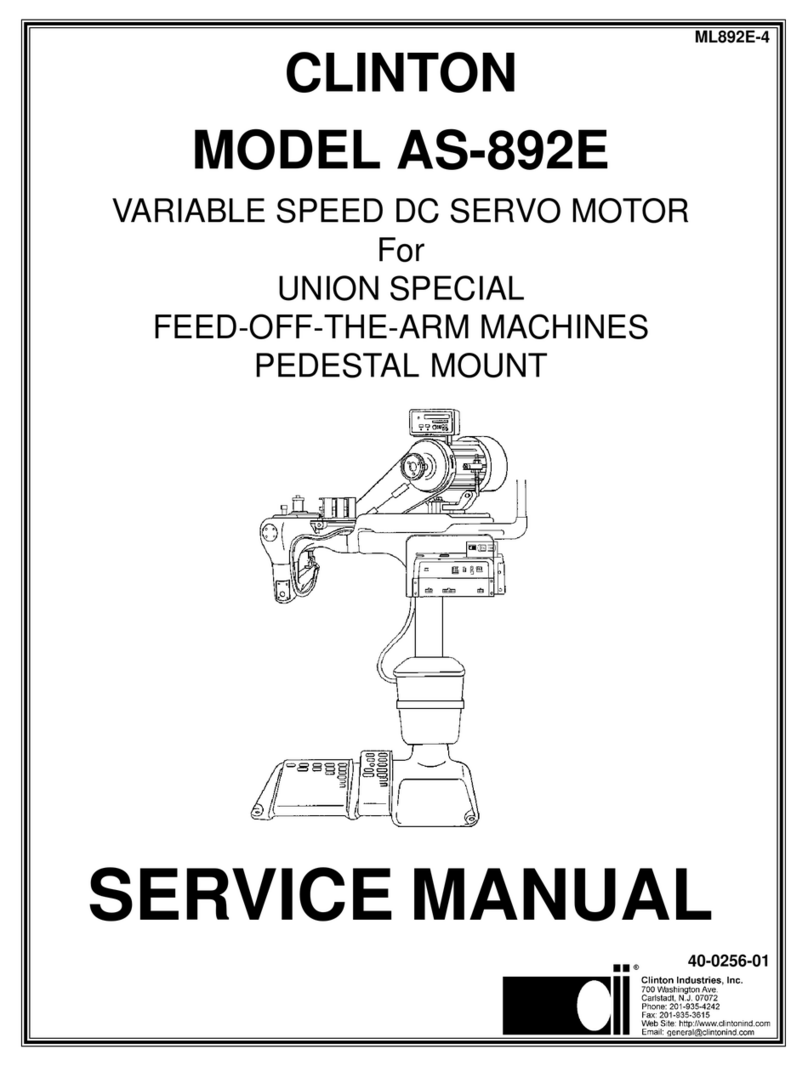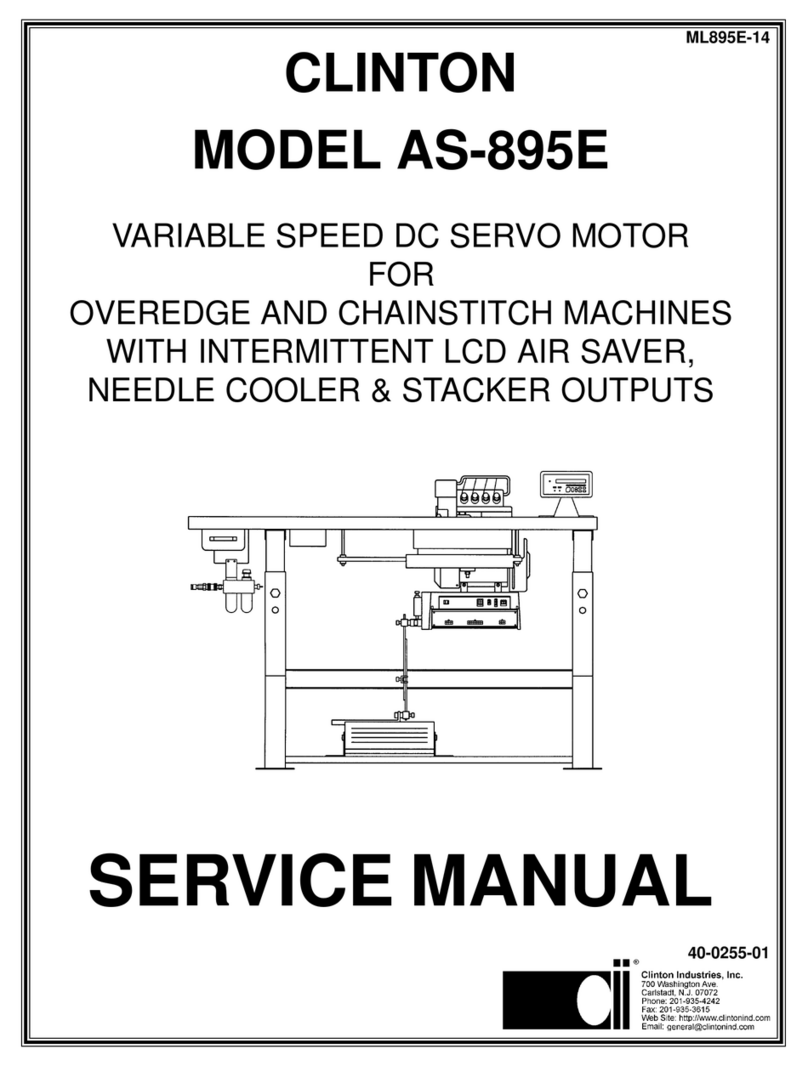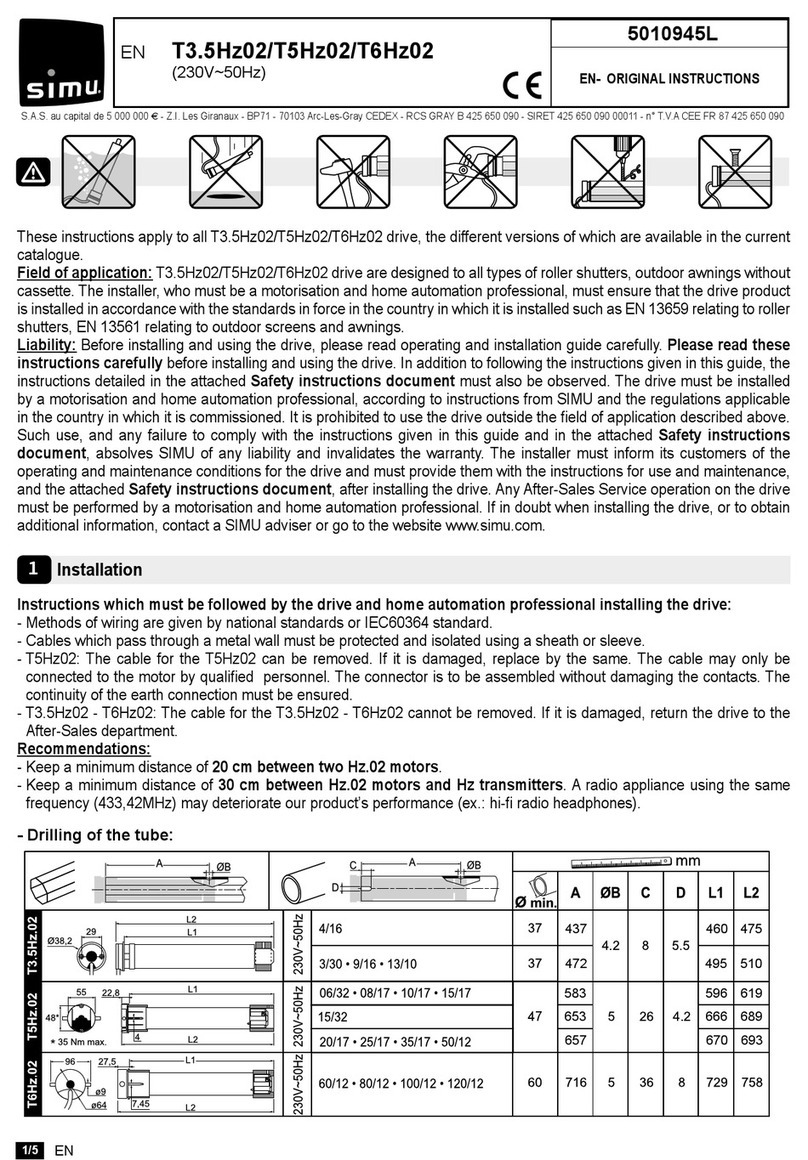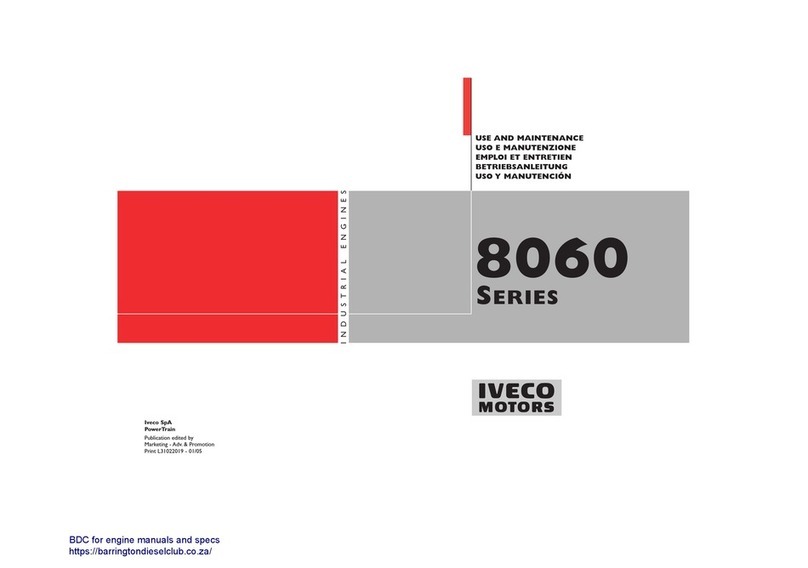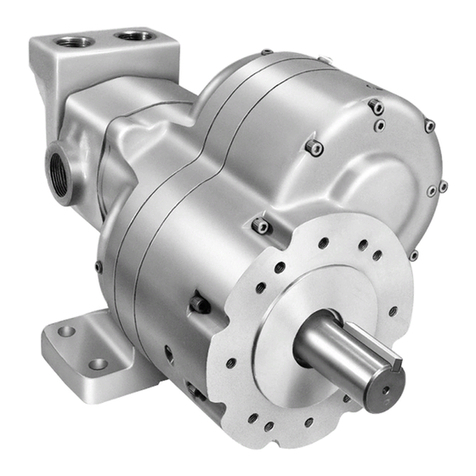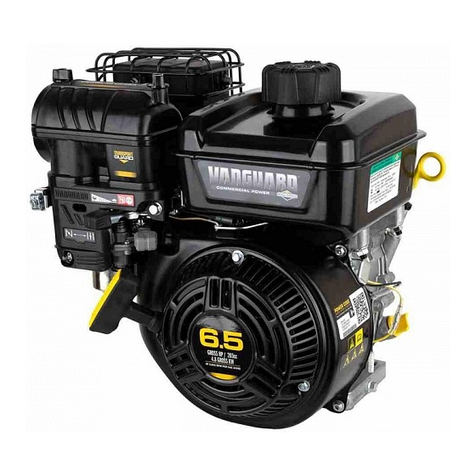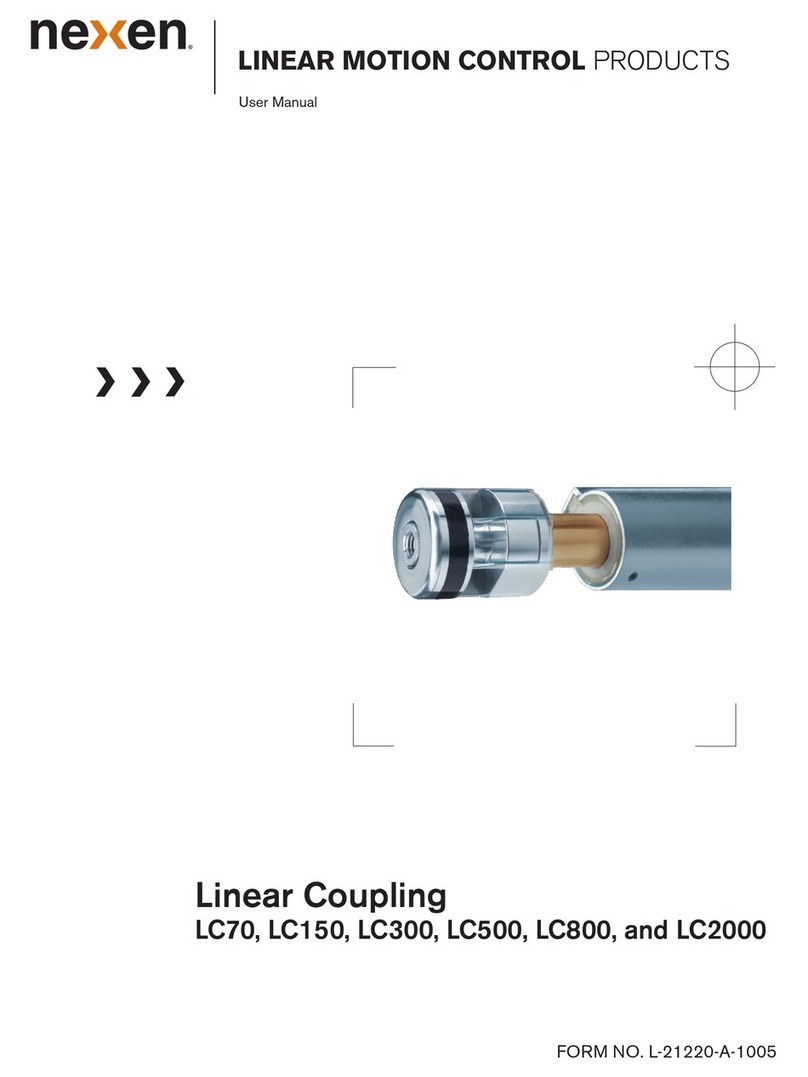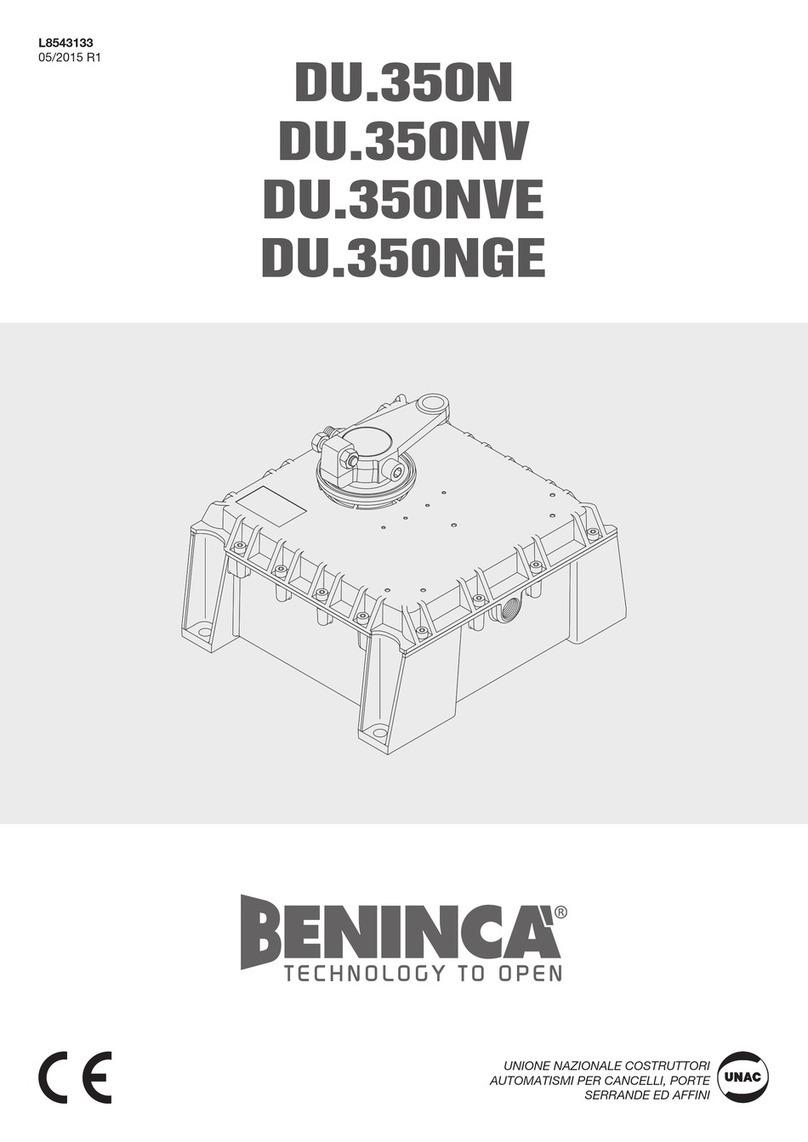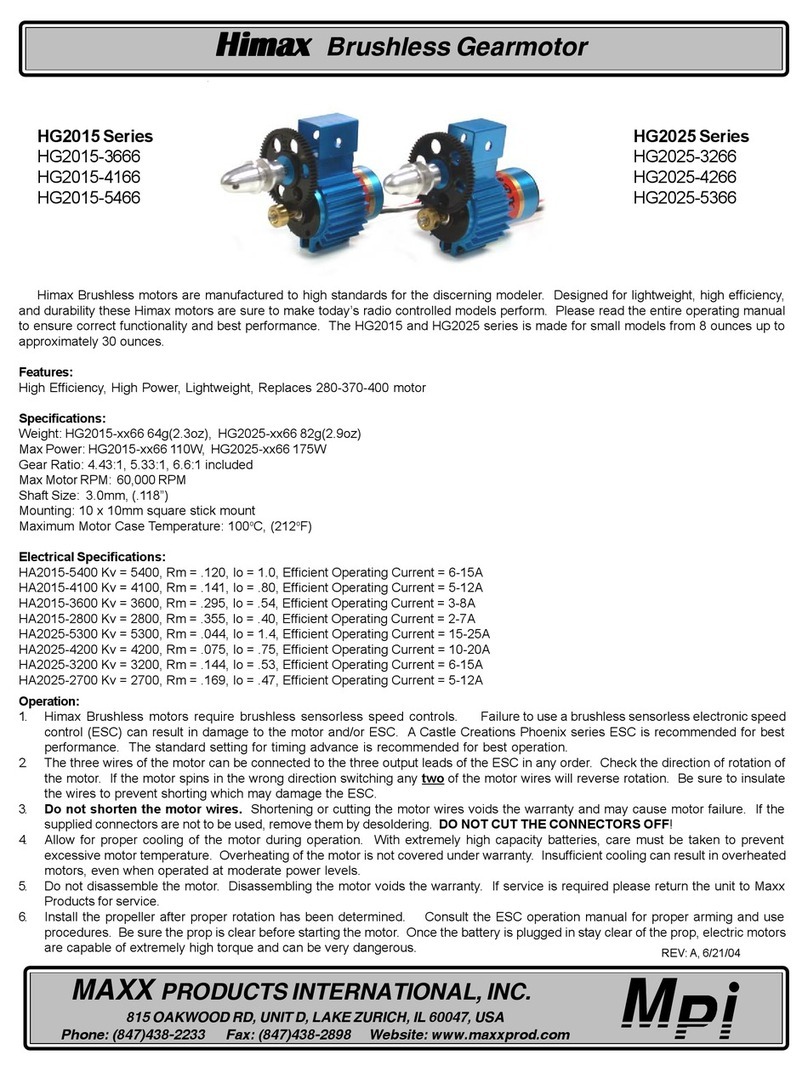Clinton 350 Series User manual

~
©l!aLt~~®~
~
2
CrCLE
ENGINE

MARK
HOME OF
CLINTON MACHINE COMPANY
MAQUOKETA,
IOWA
_
TAB
LE
0 F
CON
TEN
TS c-
S U B JE C T PAGE NO.
FACTS-About
Your 2·Cycle Engine 3
,4
FUEL-For Clinton 2.Cycle Engines 5
STARTING-Check
list
and
Instructions 6
MAINTENANCE-Adjustments 7
Carburet
ion 7
Governor
8
Magneto
, Condenser, Coil 9
Valves 9, 10
SERVICE-REPAIRS 4, 11
TROUBLE CHART 12, 13
ACCESSORIES _ 14, 15
WARRANTY
16
2

FACTS
ABOUT
YOUR
NEW
CLINTON
2
CYCLE
ENGINE
TYPES
OF ENGINES
There are two basic types of small air
cooled gasoline engines, those operating
on four stroke cycle (commonly referred
to as four cycle) and those operating on
a two stroke cycle (commonly referred to
as two cycle) . The principal difference
between the above types is the number of
power strokes or the number of times the
engine fires for each revolution of the
crankshaft.
The
four cycle engine has a
power stroke or "fires" every other com-
plete revolution of the crankshaft, while
the two cycle has a power stroke on every
complete revolution of the crankshaft. An-
other basic difference is in the method of
lubrication.
The
four cycle engine retai ns
a reservoir of oil in the crankcase, and dis-
tributes this oil throughout the moving
parts
'of
the engine by means of a
pump
or dip finger.
The
two cycle engine is lu-
bricated solely by the correct amount of
SAE
#30
Motor oil
(Mineral)
mixed
with the Gasoline.
The
gasoline and oil
mixture is compressed and forced through-
Out the crankcase and combustion area of
the engine. Thus the oil content of the
fuel mixture lubricates the moving parts
of the engine. Your Clinton Engine is the
two cycle type, and therefore, the discus-
sion in this manual will pertain only to
this type of engine.
THE
TWO
CYCLE
PRINCIPLE
In your Clinton two cycle engine, the
piston acts as both an intake and exhaust
valve- Assume that the cylinder is filled
with a mixture of air and fuel, and the
piston is at the bottom of its stroke. As
the crankshaft revolves the piston rises,
and the mixture of air and fuel is then
compressed in the combustion chamber.
Whe
n the piston is near its highest point,
GENERAL VIEW
the 'compressed mixture is
then
ignited,
which forces the piston to descend and
gives the power stroke.
During
this up-
ward stroke of the piston a vaccum is
created in the crankcase which draws a
fresh mixture of fuel and air through the
reed valve into the crankcase
(the
crank-
case being an air tight casting containing
the crankshaft and connecting rod assern-
blies.)
With
the downward stroke of the
piston, the charge is compressed in the
crankcase. As the piston approaches the
bottom of its stroke, its movement un-
covers the exhaust port, through which
the burnt gases escape from the combus-
tion chamber, which immediately causes
the pressure within the chamber to fall.
As the piston continues its downward
motion, it then uncovers an inlet port
and a fresh charge of air and fuel forces
its way into the combustion chamber from
the crankcase. This incoming fresh charge
of fuel pushes the remainder of the burnt
gases out through the exhaust pOrt. A pro-
jection on the top of the piston deflects
the fresh charge and prevents it from
passing directly across the cylinder and
out the exhaust port.
3

PRECISION BUILT
Your Clinton Engine has been preci-
sion built and specifically engineered to
the purpose of your equipment.
It
has
been carefully inspected throughout all
phases of its production and assembly by
men who are devoting their lives to the
production of fine air cooled gasoline en-
gines. Your Clinton is the finest two cycle
gasoline engine of its type that money
can buy.
CARBURETION
The carburetor (see Fig. No
.1)
on
your engine is of the latest design, engi-
neered and, calibrated exactly for your en-
gine to assure you of the best possible
performance and efficiency. The standard
float-type carburetor or the economy suc-
tion-type, may be selected for use on your
engine, depending upon the rnanufacrurer
of your equipment and
/or
the engine ap-
plication.
IGNITION
The magneto used on your Clinton
(see Fig.
,No.7)
is a flywheel type which
produces high voltage at cranking speeds
to insure easy starting. This magneto gives
positive protection from dirt, dust and
moisture accumulating in the magneto
and assures trouble-free performance in
starting your Clinton when it is subjected
to high humidity and dusty conditions
COOLING
An air blast created by the rotation of
the finned flywheel is directed over the
cooling fins on the cylinder block and
head. This results in an exceptionally cool
running engine.
LUBRICATION
The oil (SAE
#30
motor oil-mineral),
which is combined with gasoline in the
proper amount in the fuel mixture (see
"Fuel Preparation for Clinton 2-Cycle
Engines") , is distributed to the bearings
and moving parts of the engine requiring
lubrication. Since clean fresh oil is being
continuously supplied to the engine in
the fuel mixture, there is no necessity for
re-circulation of used oil. After the oil in
the fuel is once used for lubrication, it is
immediately burned up in the combustion
chamber and discharged through the ex-
haust pOrt.
GOVERNOR
Your Clinton engine is equipped with
a positive automatic
(air
controlled ) gov-
ernor which insures a controlled and con-
stant speed under all operating condi-
tions. The governor allows the engine
to
operate at the same speed with or without
the load to which the engine is being sub-
jected. The engine speed will not exceed
the predetermined setting". This means
that your engine will always operate at
the proper speed and will not run "wild,"
resulting in less wear and fewer repairs.
SERVICING FACILITIES FOR YOUR CLINTON ENGINE
If your
engine
requires
expert
adjusting
and
repair
service,
contact
your
local factory
approved
Clinton
authorized
service station, which you will find
listed in the classified section of
your
telephone
directory
under
"Engines-Gasoline."
You may also
refer
to the
authorized
service directory
that
comes with
your
en-
gine. It lists
the
more
than
3500
authorized
service stations -
deale
rs who
carry
a
complete
stock of genuine
replacement
parts
and
a re
factory
trained
to give
you
the
best possible service for your engine.
Only
the listed factory
approved
service stations a re a uthori
zed
to perform
warranty
repairs
and
adjustments.
4

ENGINE SPEED
ADJUSTMENT SCREW
~---
FUEl TANK -
(SEE INSTRUCTIONS
ON
OTHER SIDE FOR
FUEl MIXTURE)
CHOKE LEVER
POSITIONS RUN
HIGH SPEED
NEEDLE VALVE
CARBURETOR CHOKE
.a
ADJUSTMENTS
FOR YOUR
CLINTON
2·CYCLE
GASOLINE
ENGINE
FIGURE
No.
1
FUEL
PREPARATION
FOR
CLINTON
TWO·CYCLE
ENGINES
Your
Clinton
2·cycle
engine
is
built
to give you years of
trouble-free performance, if
properly
used
and
cared for.
A very
important
point
is fuel
mixture
and
lubrication.
By carefully following
the
instructions below, you
will
have
long
and
dependable
service from
your
Clinton
2-cycle en-
gine.
DO
NOT
POUR
UNMIXED
GASOLINE
OR
OIL
INTO
THE
FUEL
TANK.
TYPE
OF OIL MIXING RATIO OF OIL TO GASOLINE
Use'SAE # 30 motor oil f-mineral), For the first five hours of operation
such as Mobiloil, or a comparable straight mix % of a pint of oil with each gallon
mineral oil. DO
NOT
USE A DETER· of gasoline. Thereafter reduce the quan-
GENT OIL OR AN OIL CONTAINING tities of oil to
Y:2
pint to each gallon of
ADDITIVES. gasoline.
TYPE
OF GASOLINE
CAUTION
Use a good grade of regular gasoline
that is available at your local filling sta-
Do
not
start
a
new
engine
before
tion. High ocraine or leaded fuels will you
make
a
thorough
visual check for
give no advantage and are
NOT
rec- dents or
oth
er
damage
which
might
ommended. IT IS RECOMMENDED interfere
with
the
moving
parts of
the
THAT
ALL GASOLINE BE POURED
engine
and
which
might
be covered by
THROUGH
A FINE MESH STRAINER
TO REMOVE
ANY
WATER OR
DIRT
.
Warranties.
(See following
page
...
)
5

CAUTION
BEFORE
STARTING
A quick visual inspection of your en-
gine is recommended before you atte
mpt
[()operate it. Inspect for possible damages
that may have occurred
dur
ing shipment
and handling. Examine the blower hous-
ing and shrouds for possible dents or dis-
rorrions that may interfere with the mov-
ing parts , Check the gas line and fuel sys-
tem .
to
be sure that they are properly
intact; the spark plug high tension lead is
securely fastened
to
the spark plug termi-
nal, air cleaner is securely fastened so as
to
properly filter the air. Be sure the
engine is firmly mounted
to
the equip-
ment so as not
to
create any vibration
when the engine is operated.
STARTING
INSTRUCTIONS
1.Make sure you have a sufficient supply
of fuel mixture in gas tank.
2.Open stop cock on bottom of gas tank.
3. Adjust speed
COntrol
lever
to
position
the lever toward the spark plug which
will give approximately one-half throt-
tle opening of the carbure tor.
4.
Turn
choke lever on the carburetor into
choke position
...
horizontal.
5.
If
your engine is equipped
with
a tog-
gle shut-off switch, turn switch
to
"on"
position before cranking.
6.Crank engine by use of rope starter
(s
ee
Fig.
No
.2)
, or recoil
(au
tomatic re-
tractable) starter (see Fig. No. 3).
(Pull rope with a quick
but
steady pull
in order
to
prevent any possibility of
the rope fouling on the engine st
art
er
pulley.)
7. After engine has started, release choke
gradually to vertical position.
8. Allow engine to run at approximately
half throttle for a period of one
minute
,
thus giving your engi ne an opportunity
to establish uniform temperature and
pressure throughout.
9.Set speed adjustment screw (see Fig.
No
.1
) to position throttle control lever
for desired operating speed.
The
gov-
ern
or will then maintain a constant
speed' and will automatically compen-
sate for any engine loads that your
equipment may be subjected to during
operation. You may reset the speed ad-
justment screw, whenever it is neces-
sary, for a heavier or lighter work
load.
The
governor will then maintain
the selected speed at all times.
FIGURE
No.2
FIGURE
No
.3
6

STOPPING
INSTRUCTIO~S
,
The engine may be sropped in one of
two manners depending upon the equip-
ment found on your particular engine.
1. Press shorting clip firmly against
the
rop of the spark plug terminal until
engine has completely sropped running.
(There
is no danger of the operator
being shocked as long as the clip is
held firmly against the spark plug ter-
minal.)
-MAl
NTE
NA
NC
E
AND
ADJ
US
TMENTS
FI
GU
RENo. 4
2.
If
engine is equipped with switch, move
switch
to
"off" position.
MAGNETO
COIL
HIGH
SPEED
NEEDLE VALVE
I
BREAKER
POINT COVER
t BEARING PLATE
Giil--:;
';"'---i
GOV
ERNOR AIR VANE
AND
SPR
ING ASSY.
--
--
..:
'\:'-
_..
~
fl
YWHE
el
SCRE
EN - . . . .. .
STARTING ROPE PULLEY t
F
IGURE
No. 5
CARBURETOR-POWER RANGE
ADJUSTMENT (Flout Type Carburetor)
Start your engine and let it run a few
minutes until the engine has acquired uni-
form temperature and pressvre. Then
open throttle about 1
/3
to
give about
2/3
of the full speed of the engine. Slowly
turn the needle valve (see Fig. No
.1)
clockwise until engine begins
to
lose
speed.
The
n turn the needle in the oppo-
sire direction until the engine begins
to
accelerate. The leanest mixture between
these two points will allow a satisfactory
acceleration and steady governor action.
This will give the proper adjustment.
(Clockwise movement of needle will lean
mixture; coumer clockwise .rnovement
will richen mixrure.)
IDLE M
IXTURE
ADJUSTMENT
This adjustment is made, following the
power range adjustment, with
the
engine
7

idling at approximately 2200 r.p.m.'s.
Slowly turn the idle adjusting needle
clockwise until the engine begins to miss
or lose speed. Then turn needle in counter
clockwise direction until the engine 'runs
smoothly again. The point at which the
engine is running smoothly will deter-
mine the proper setting.
flOODING
(Excessive fuel mixture
in combustion
chamber)
This condition can be created by over-
choking, tipping the engine to an extreme
forward angle or cranking a hot engine
with the use of the choke which may
cause
toO
much fuel to be drawn into the
crankcase and combustion chamber. The
fuel mixture therefore becomes too rich
for combustion. Also it may be possible
that the shut-off needle in the carburetor
does not seat properly and allows the fuel
to flowunrestricted into the crankcase. To
correct-turn
shut-off cock to "off" posi-
tion under fuel tank, continue to crank
the engine until it starts and re-open shut
off cock fuel valve under fuel tank.
If
the
carburetor continues to overflow with
fuel after the ' engine has started, gently
tap the body of the carburetor which will
usually unseat the needle if it should be
temporarily stuck. The disassembly and
cleaning may be necessary to correct this
condition if not remedied by above
method. Extreme cases of flooding occur
when the engine has been allowed to
stand with the spark plug in a downward
position causing a large quantity of .fuel
to run into the crankcase and combustion
chamber.
If
this occurs, remove the spark
plug and drain the fuel from the combus-
tion chamber, because you will not be
able to turn the engine over by hand with
a large amount of fuel in the combustion
chamber.
Wipe
spark plug terminals dry
with a rag.
(Be
sure to tighten spark plug
sufficiently to eliminate the danger of a
compression leakage around the plug.)
ENGINE
SPEED
ADJUSTMENT
SCREW
---
-
--
REMOTE
CON
TROL
CABLE
LINKAGE FORTIlLOTSON
CARBU
RETOR
SHOWN TOP VIEW (WITH Fl
FIGURE
GOV
ERNOR (Pneum
atic
or
air
velocity type)
Whe
n the governor is operating prop-
erly, the air vane will be activated by an
air stream created from the finned fly-
wheel in the blower housing. The forces
of the air against the air vane are counter-
balanced by the tension created by a cali-
brated governor spring. Loss of engine
speed will decrease the air velocity against
the air vane and allow the air vane to be
moved counter-clockwiseby the calibrated
governor spring tension which will open
the throttle on the carburetor to imme-
diately restore the engine speed to the
constant governor setting. The opposite
is true when the engine increases speed.
The
air blast is immediately increased
against the air vane and forces the air
vane clockwise which in turn closes the
throttle in the carburetor to reduce the
engine speed thus created, and maintain a
constant setting of the speed on the en-
gine at all times. To insure proper opera-
tion, the governor spring must be free to
move. The linkage connecting the air
vane and carburetor must be free from
dirt deposits so as not to disturb the bal-
8

vERNOR LINKAGE
(WHEEL REMOVED)
INSTALLATION FOR CARTER
CARBURETOR
No.6
ance between the air vane ,and ·the cali-
brated governor spring.
The
cleaning of
the air vane and the lever 'linkage is ac-
cessible when the blower housing is re-
moved.
The governor normally requires very
little servicing unless the engine has been
exposed to very dusty and dirty operating
conditions ' that may cause an excessive
amount of dirt to be sucked in through
the blower housing and deposited on the
moving partS of the governor linkage
within the blower housing.
MAGN
ETO
ASSEMBLY
(Flywheel Type)
The
magneto assembly is readily acces-
sible by removing the blower housing,
flywheel, and breaker point dust cover.
Removal of these parts makes it very easy
/ to check the breaker
point
setting and do
any cleaning that may befound necessary
in the entire magneto assembly (see Fig.
No.7).
BREAKER
POINTS
The breaker point clearance gap can be
easily adjusted by the removal of
the
dust cover from
the'
point assembly.
9
This gap should beadjusted with a feeler
gauge at .018 to .020 of an inch (see Fig.
No
.7)
.
CONDENSER
It
is generally advised to replace the
condenser whenever the contact points
show signs of pitting or oxidation. The
condenser has a capacity of 13 mfd and
should be tested for capacity, resistance,
and leakage whenever magneto difficulty
is experienced (see Fig.
No.7).
COIL
Check the terminal connections from
the coil (see Fig. No. 7.) for good con-
MAGNETO
HIGH TENSION
COIL ILEAD
t
..
SPARK
~~-PLUG
~
--CONDENSER
BEARING
-PLATE
tl?1.
BREAKER
POINTS
FIGURE
No.7
tact
and proper insulation. Coil windings
will not normally give difficulty unless
mechanical damage has been experienced.
A check for possible grounds within the
coil is easily identified by the use of a
conduity meter-,
SPARK
PLUG
A clean spark plug contributes to easy
starting, economy of operation, and maxi-
mum power..
When
the spark plug be-
comes fouled, replace with new plug,
rather than attempting
to
reclaim the used
plug through various cleaning methods.
Replace with either Champion
H-ll
or
Auto Lite AL7. Adjust gap of plug
to
.025 of an inch.

CLEANING OF VALVE
PORTS-
EXHAUST
The only service required to the valve
ports is an occasional cleaning to remove
carbon deposits. Remove muffler assembly
from engine (see Fig.
No.8)
which will
expose the exhaust valve ports and clean
with suitable instrument capable of scrap-
ing and removing the carbon deposits
within these ports, The engine should be
turned over by hand until piston moves
below the POrt openings which will al-
low greater access for the cleaning of these
parts. (Care should be taken so as not to
damage or score the porr when cleaning.)
FIG
UREN
o.
8
CLEANING OF VALVE PORTS- INTAKE
To clean the intake portS (see Fig.
No
.9)
, it is necessary to remove the
bearing plate assembly which will then
expose these ports for easy cleaning. The
cleaning of these
POrtS
will be accom-
plished in the same manner as described
in the cleaning of the exhaust valve pOrts.
The intake ports will normally require
very little servicing.
FIGURE
No.9
sion, poor carburetion, and low efficiency
in the general operation of the engine. It
is recommended, whenever the reed valves
are found to be distorted or bent out of
shape so as to cause leakage, that they be
replaced.
It
is not recommended to re-
bend or invert the reed valve in repairing
and servicing this assembly.
The reed valve can be visually checked
for leakage by looking into the intake port
side of the reed plate and if light is de-
tected at the point where the reed valve
seats on the reed plate, it is then recom-
mended that the reed valve be replaced.
CLEANING OF MUFF
LER
W hen power loss is observed this may
be due to excessive carbon accumulation
in the exhaust ports of the muffler. These
-
RE
ED VALVES
The
reed valves are one of the more
important functioning parts of your en-
gine and if not set and working properly
can cause many difficulties-such as dif-
ficulty in starting, lack of sufficient fuel
in combustion chamber, lack of compres- FI
GU
RE
No.
10
10
,....
....,
.-:-..-
~
s
~·
·_
·
...
REE
D STOP VALVE SETTING 3·
»i::.:
VALVE
REED---
[11\
'-
_,
' L.
..
-

carbon restrictions may be cleaned by the
use of a screw driver tip or any suitable
instrument that will remove carbon de-
posits from these ports. In extreme cases
it may be necessary to remove the muffler
from the engine and clean from within
(see Fig. N
o.8)
. Proper cleaning and
removal of all carbon accumulations is
'. necessary to eliminate the possibility of
creating back pressure from the restric-
tion of the exhaust POrt of the muffler.
MAJOR
REPAIRS
It is not the intention of this manual
to be complete within itself and give all
the necessary recommendations and toler-
ances required for the major repairing of
the Clinton rwo cycle engi ne.
It
is, there-
fore, our recommendation that when you
find your Clinton Engine needs repairs
and adjustments of a major nature you
refer to your authorized service station
directory or the classified section of your
telephone directory
to
determineyour near-
est Clinton factory authorized service
Sta-
tion. AU of these 3500 factory authorized
service stations employ skilled mechanics,
factory trained in the proper servicing and
repairing of our engines, and stock a com-
plete line of genuine Clinton replacement
parts for repairing your engine when it
may need attention.
DO NOT HESITATE TO WR
ITE
US
If
you should desire more complete
and detailed information pertaining to
your Clinton Engine, please do not hesi-
tate to contact us here at the factory.
Our
entire organization is at your disposal for
this purpose and we will be very happy
to forward to you u
pon
request, any
additional information you may desire
pertaining to our Clinton Engines. Please
address your correspondence to: Service
Division, Clinton Machine Company,
Maquoketa, Iowa.
v-
I
WORLD
·
WIDE
SERVICE
There
are
over
3500
Authorized
Clinton Service Stations
w hich
offer
the
owne
rs of Clinton engines an
unparalleled
service on a
world-w
ide
basis. Consult the Classified sec-
tion
of
your
telep
hone directory
for
the
nea
rest one for a
free check-up.
11

TROUBLE
SHOOTING
CHART
TROUBLE
PROBABLE
CAUSE
1.
ENGINE
FAILS
No
fuel
in
tank.
TO
START
Fuel
shut-off
valve
closed
Sediment
in
carburetor
Air
lock
in
fuel
line
Fuel
line
clogged
Broken
high-tension
lead
Reed
valve
not
seating
2.
ENGINE
HARD
Water
in
fuel
TO
START
Loose
or
defective
wiring
Defective
reed
valve
Spark
plug
cracked
Spark
plug
fouled
Dirty
or
corroded
breaker
pts.
Poor
compression
resulting
from:
Loose
spark
plug
Defective
reed
valve
Worn
rings
3.
ENGINE
Spark
plug
fouled
MISSING
Spark
plug
cracked
Improper
spark
plug
gap
Shorted
high
tension
lead
Magneto
or
condenser
terminal
loose
Dirty
or
corroded
breaker
pts.
Water
in
fuel
4.
ENGINE
Carburetor
choke
partly
OVERHEATING
closed
Air
flow
obstructed
Insufficient
lubrication
12
REMEDY
Fill
Tank
Open
Valve
Drain
carburetor
bowl
Bleed
fuel
line
Clean
out
the
line
Replace
lead
Contact
nearest
Clinton
Service
Station
Drain
and
refill
entire
fuel
system.
There
may
be
ice
in
cold
weather
Check
high-tension
lead
for
breaks
or
loose
connections
Contact
nearest
Clinton
Service
Station
Replace
plug
Clean
plug;
reset
gap
to
.025
Clean
or
replace;
reset
points
to
.018
or
.020
inch
Tighten
plu
-g
Contact
nearest
Clinton
Service
Station
Contact
nearest
Clinton
Service
Station
Clean
plug;
reset
gap
to
.025
Replace
plug
Reset
to
.025
Replace
lead
Tighten
terminals
Clean
or
replace
and
reset
points
to
.018
to
.020
inch
Drain
and
refill
entire
fuel
system
See
that
choke
setting
is
wide
open
Check
to
see
that
all
air
passages
around
cylinder
and
head
are
free
from
dirt
and
weeds.
Clean
flywheel
fins
Check
for
proper
ratio
of oil
and
gas
mixture
in
fuel
tank

TROUBLE
PROBABLE
CAUSE
REMEDY
5.
ENGINE
LACKS
Carburetor
choke
partly
closed
See
that
choke
is
wide
open
POWER
Air
cleaner
clogged
Clean
or
replace
Improper
carburetor
setting
Adjust
carburetor
Muffler
clogged
Clean
exhaust
ports
of
muffler
Governor
out
of
adjustment
Readjust
and
tighten
linkage
Exhaust
port
clogged
Clean
ports
Poor
compression
Contact
nearest
Clinton
Service
Station
Reed
valve
leaking
Contact
nearest
Clinton
Service
Station
Piston
worn
Contact
nearest
Clinton
Service
Station
6.
ENGINE
Loose
flywheel
Tighten
retaining
nut
NOISY
Excessive
carbon
deposits
Clean
exhaust
ports
and
muffler
Eng
ine
loosely
mounted
to
Tighten
bolts
equipment
7.
ENGINE
SPEED
VARIES;
OR
ENGINE
FAILS
TO
ADJUST
ITSELF
TO
LOADS
Faulty
governor
linkage
Faulty
governor
spring
Improper
adjustment
of
governor
Check.
straighten
and
tighten
linkage
as
necessary
Check,
replace
if
stretched
or
kinked
Readjust
Improper
carburetor
Contact
nearest
Clinton
Service
Station
adjustment
Governor
linkage
binding
Clean,
make
sure
all
linkage
free
to
due
to
dirt
move
properly
Overloading
Reduce
load.
Don't
crowd
mower
in
high
or
thick
grass
....
13

Recoil
Starter
Kil
AllY
,
Part
No
,
Descr
iption
Slarler
AllY
.
Kit
Used
On
Engine
Ser
ies
(
·6311
(
·6312
Schnacke
Type
Schnacke
Type
350,
A300,
moo
B700
,
moo
(
·6313
(
·6314
Schnacke
T
ype
Schnacke
Type
800,
moo
,D
IlDO
moo
,
A3
·
100
17
10
18
8
/
~
-
--
5
Ref.
Part
Nu
mher
Application
No.
Part
Description
(linton
Schnack
e (·
6311
(
·6312
(
·6313
(
·6314
1
Axle
.
(lutch
&
Pin
Allembly
(-4840
11
50·19A 1. _ 1 1. 1
2
Brace
-B
lo
we
r
Hous
ing
11
64 1. ..
3 (
able.
Handle
& Anti·Fray
Tube
Alle
mbly
(·4839
11
50·22 1. 1. 1. 1
4 (able-W
ire-4
8"
long
(
·4838
11
50·6 1. 1. 1 1
5
(over
-Cable
Shea
ve
-Assembly
C·4848
11
50·7A 1. 1. 1 1
6
Sheave
Drum
Assembly
(
·4842
1150·5
1 1. 1 1
7
Housing
-S
tarler (
·4843
115O
·8A
1. 1. 1
(·4844
1160
·8 1. ..
8
Nut
-He
x. 5/16
-24
(Axle &
Clutch
Assembly
) (
·5454
1150
·14 1. 1. 1. 1
9
Nut
-He
x.
lock
:::i:
10
-32
5453
__
4.. 4 4 4
10
Nut
-Driven
Membe
r (·4
833
7·20·75 1 , ,
(·4834 7·20·53 1. , ..
(·
483
5 7·2
0·59
1. ..
(·4829 7·20·90 1
11
Plate
&
Bushing
Allembly-Mou
nti
ng
(·4846
1150
·17 1. 1 1 1
12
Ring
-R
eta
ining
,
Reco
il
Assembl
y (
·4845
1150·15 , 1. 1 1 t
13
Rivet
-Blo
wer
Hous
ing
Brace
361
9 2.. ..
14 Screw-l0-32x3/8 (Recoil
As
sembl
y
10
Start
er
Hou
sing)
3210
4 4 4 4
15
16 Screw-l0·32x5/16 (Recoil
Starter
to
Engine
)
Spring-Recoil
4832
(·4837
115
0·4.. 4
1. 4
1 4
1. 4
1
17
Shim-Re
coil
Starter
Nut
4836 3 3 3 3
18
Washer
-Cable
Clamp
(·5487
115
0·20A
1 1 1 1
19
Washer
-No
. 10
lock
3285 4 4 4 4
14

Ca
rbureto
r
Pa
rt
No
. Carter
Pa
rt
No.
Rebuild
Kit
Clinton
Engine
Series
C-2078
-1
N
·2029S
C·6315
VS
·200
9
Clinton
Carter
Re
f.
No.
PAR T
DESCRIPTIDN
Part
No.
Part
No. Quan
.
1
BDWL
... . C·
3948
23
·42
2
BALL
- C
ho
keS
ha
ft. .. C
·3988
1
16
·16
3
BODY
-
Car
buretor . Not
Supplied
4
FLOAT
AND
LEVER
ASSEMBLy
..
C·3998
21·
1395
1
5
GASKET
-
Ne
edle
Se
at. ..
C-3975
20
-22
1
6
GASKET
- Bowl Nut . C
-3976
20·1
10 1
7
GASKET
- Bowl. .
C·3979
23A
-19
1
8
JET
ASSEMBLY
- L
ow
S
pe
ed . C
·3995
11-2
465
1
9
NEEDLE
ASSEMBLY
-
Ma
inAdjustment.. .
C·3962
159
-1585
1
10
NEEDLE
- Idle
Adju
sting
.. . .. C
-3997
30A-57
1
11
NEEDLE
AND
SEAT
ASSEMBLY
.
C·3922
25-219S
1
12
NOZZLE
ASSEMBLY
-
Ma
in .
C·3956
12·398
1
13
PACKING
- Hi
gh
Sp
eed Adjust
ing
Ne
ed
le .. C·3
923
163
-53
1 •
14
PLUG
- E
xpans
ion
.. . ..
C-3989
47·" 1
15
SCREW
- ValveAttaching .. C
-3960
101
-320
4
16
SPRING
- IdleAdjustment. ..
C-3959
61
-475
1
17
SPRING
-C
ho
ke
Shaft
. C
·3985
61-369
1
18
SHAFT
- Throttle. . .. .
C·3993
3·833
1
19
SHAFT
AND
LEVER
ASSEMBLY
- C
hoke
.. C
-3996
14
-4635
1
20
SHAFT
- Float. .
C-3980
24
-23
1
21
VALVE
- Throttle . C
-3953
2
-139
1
22
VALVE
- Choke.. .. .. C
-3969
7
-152
1
15

WARRANTY
The Clinton Machine
Company,
Maquoketa,
Iowa, U.S.A.,
warrants
each
new en-
gine it manufactures
against
defects in material
and
workmanship
under
normal
use
and
service.
Our
obligation
under
this
warranty
is limited to
make
good
at
our factory or
authorized
service station,
any
part
or ports th
ereof
which shall,
within ninety
days
after
delivery of such eRgine to the original purchaser,
be
returned
to us or our factory
authorized
service station, with
transportation
charges
prepa
id,
and
with' our exa mination shall disclose to our own satisfaction to
have
been
thus defective; this
warranty
being expressed in lieu of all
other
warranties
expressed or implied
and
of all
other
obligations or liabilities on our
part,
and
we
neither assume, nor
authorize
service stations to assume for us
any
other
liabilities
in connection with the sale of our
engine
.
This
warranty
shall not
apply
if
any
engine which sholl
have
been
repaired
or
altered
outside of our own factory or our
factory
a uthorized service station in
any
way
so as in our judgement to affect the stability or liability, nor which has
been
subjected to misuse, negligence, or occident, nor
any
engine
made
by us
which
does
not
have
a
governor,
or sholl
have
been
operated
at
a
speed
or
load
beyond
the factory specified
capacity
.
Carbureto
rs,
magnetos,
and
other
trade
accessories
are
guaranteed
separately
by their respective manufacturers.
The Clinton Machine
Company
reserves the right to
make
changes
in design,
and
changes
or improvements upon this product without imposing
any
obligation
upon
itself to install the
same
upon its products previously
manufactured.
CL
·INTON
MACHINE
COMPANY
SERVICE
DIVISION - MAQUOKETA,
IOWA
Printed in U.S.A. 16 Part No.
2150
This manual suits for next models
13
Other Clinton Engine manuals
Popular Engine manuals by other brands
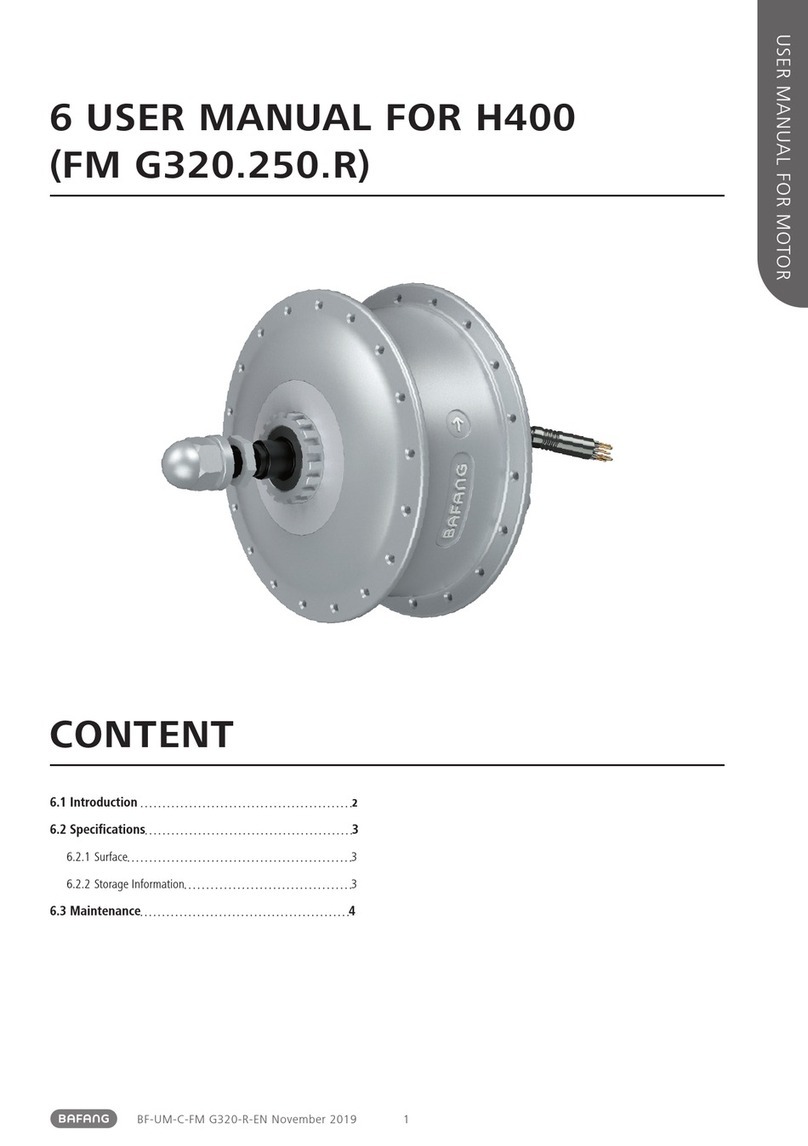
BAFANG
BAFANG FM G320.250.R user manual
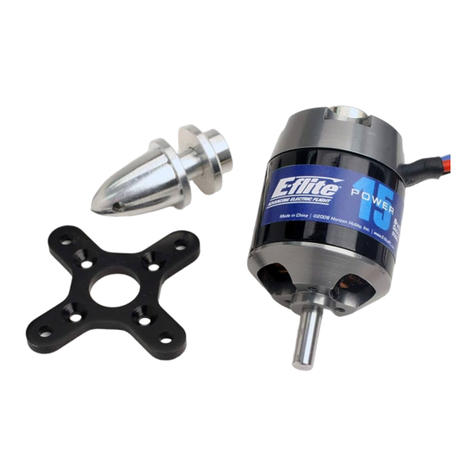
E-FLITE
E-FLITE EFLM4015A instructions
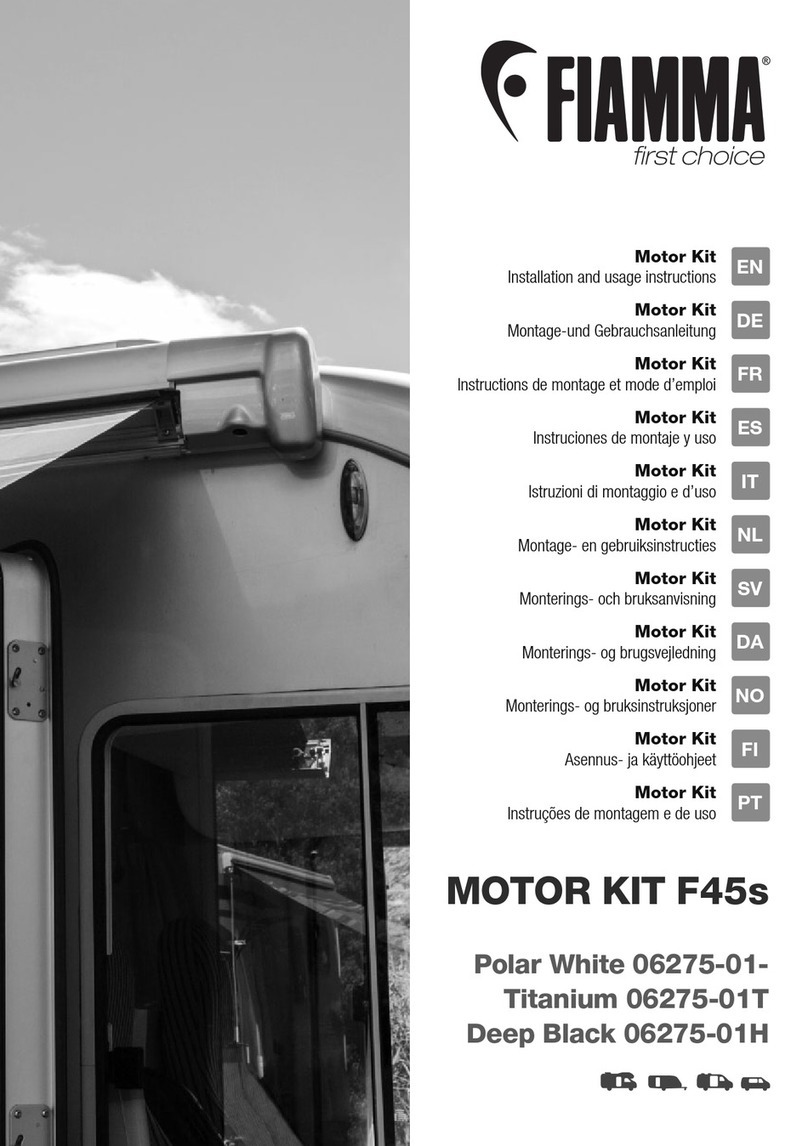
Fiamma
Fiamma 06275-01 Installation and usage instructions

Motorline professional
Motorline professional ROLLING Series User's and installer's manual
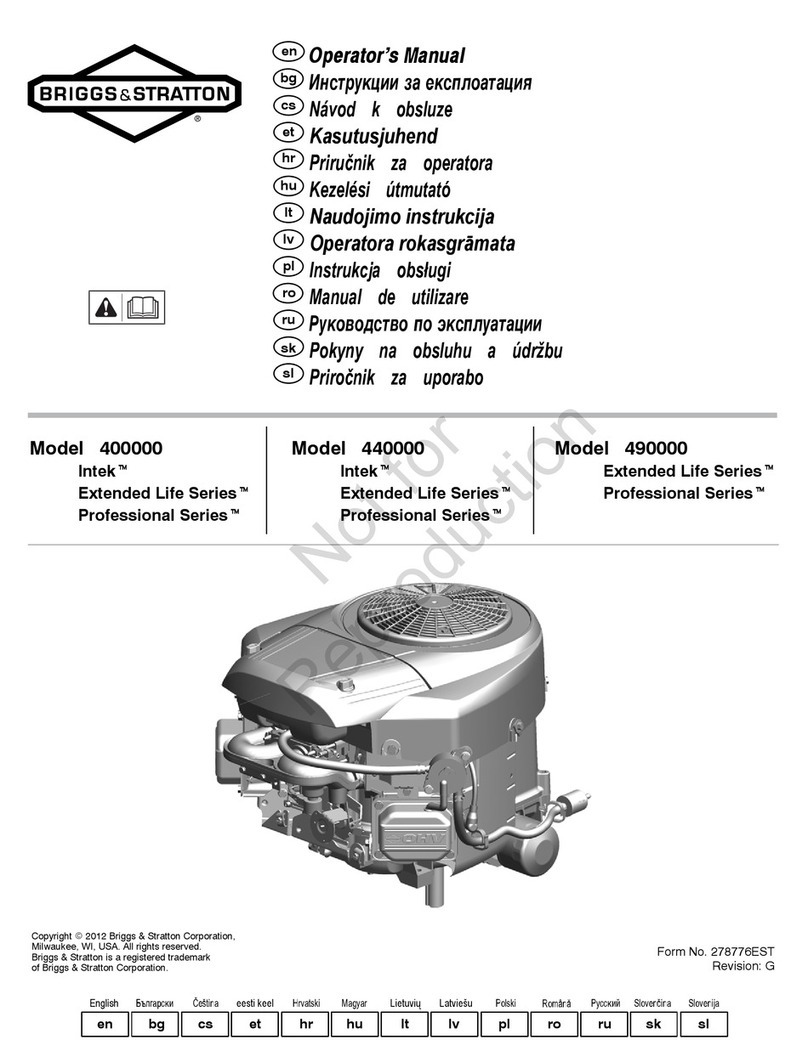
Briggs & Stratton
Briggs & Stratton 440000 Professional Series Operator's manual

MTU
MTU 20V4000L32FB operating instructions
